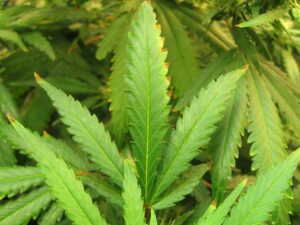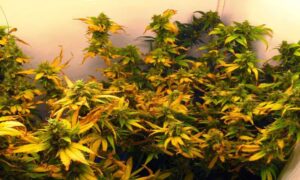Everything You Need to Know About Cannabis Nutrient Burn
As you may already be aware, Health Canada can issue you an ACMPR licence to grow your own medical cannabis if you are a registered medical cannabis patient. The number of plants that you can grow will depend on the stipulations of the license you obtain, and we at Cannalogue would like to offer you as much information as we can so that your attempt to grow your own medical cannabis is successful. One of the issues you need to watch out for as a grower is cannabis nutrient burn. But, what is it? How does it manifest and what can you do about cannabis nutrient burn? Read on and get the answers to these, and other questions that you may have about “nute burn,” as cannabis nutrient burn is more commonly referred to.
What is Cannabis Nutrient Burn?
Cannabis nutrient burn refers to the type of stress that your medical cannabis plants are exposed to when you avail them with nutrients that are in excess of what they need during a particular phase of their growth.
Many inexperienced medical cannabis growers mistakenly think that the more nutrients that they give their plants, the better or the faster the plants will grow and give a bountiful yield. This is far from the truth because plants aren’t animals which tend to put on weight when overfed.
Instead, plants will exhibit signs of stress when they are given more nutrients than they need at a particular time during their growth cycle. This stress is revealed through several signs that you can quickly take note of if you are observant.
Signs of Cannabis Nutrient Burn
 Your medical cannabis plant leaves will take on a deep green color
Your medical cannabis plant leaves will take on a deep green color- The tips of the leaves will become bright and almost translucent
- The tips of the cannabis leaves will bend to a 90-degree angle
- Sugar leaves will turn yellow from their tips and then dieback quickly
- Brown or bronze spotting can also occur in the edges of the medical cannabis plant leaves’ serrations
- The branches and stalks of your cannabis plants may become magenta, purple or even deep red
Why You Should Be Bothered By Cannabis Nutrient Burn
As you may know, plants manufacture their food through a process known as photosynthesis, and this starts with the leaves capturing sunlight. When extensive nutrient burn occurs, the plant loses this “energy trap” and is unable to manufacture the food that it needs to thrive or even survive. In short, nutrient burn can threaten the very survival of your medical cannabis plants.
 Secondly, cannabis nutrient burn should worry you a lot more when it occurs during the flowering stage of your medical cannabis plants. This is because when leaves are damaged or lost in this phase, the chance that the plant will grow new leaves is minimal since all the energy of the plant is devoted to growing buds.
Secondly, cannabis nutrient burn should worry you a lot more when it occurs during the flowering stage of your medical cannabis plants. This is because when leaves are damaged or lost in this phase, the chance that the plant will grow new leaves is minimal since all the energy of the plant is devoted to growing buds.
Without leaves, the yield of your medical cannabis plants could be compromised since the plant can even die in the worst case of cannabis nutrient burn.
Also of concern is the effect of excess nutrients in the buds you harvest once the medical cannabis flowers reach maturity. Nutrient contaminants can cause the taste and flavor of the medical cannabis to be unpleasant, and this could explain why many growers “flush” the plants a couple of weeks before harvesting the buds.
What to Do When Cannabis Nutrient Burn Occurs
The old wisdom goes that if you find that you have dug yourself into a pit, your first course of action is to stop digging. Similarly, if you realize that your medical cannabis plants are showing signs of nutrient burn, the first logical step is to stop giving the plants additional nutrients until those already in the grow medium are depleted or their concentration reduces.
Next, you need to flush your plants with plain water whose pH has been balanced to suit the needs of medical cannabis plants. This plain water will help the plants to reduce the concentration of nutrients within their tissues, and the damage will be halted.
If you are growing your medical cannabis plants hydroponically, you could remove the water with a high nutrient concentration and replace it with a solution which has a lower concentration of nutrients. Alternatively, adding plain water whose pH is appropriate will lower the nutrient concentration in the hydroponic medium.
It is also recommended that you remove any damaged plant material, such as severely affected leaves and calyx clusters, when nutrient burn occurs. Dead leaves and flowers will certainly rot, and this could bring a whole new set of problems in your medical cannabis grow operation.
Give your cannabis plants a plant tonic, such as one having humic acid or silver nitrate as well as vitamins and minerals so that the affected plants can be nursed back to good health after the shock of nutrient burn.
As you resume feeding your medical cannabis plants normally, start slow by giving than half of the nutrient concentration that is recommended and then gradually work your way up to the normal level. The plants will regain their vigor and go on to give you an optimum yield. If the cannabis nutrient burn occurred during flowering, you may have to prepare yourself for a reduced yield since your plants may not fully recover from the damage they suffered.
How to Prevent Cannabis Nutrient Burn
As already discussed, cannabis nutrient burn can have devastating consequences on your medical cannabis plants, so it is wise to learn what can be done to prevent this problem instead of having to deal with it after the fact.
The first way to prevent nutrient burn is to educate yourself about the appropriate nutrient mix for your plants during the different stages of growth. For example, cannabis plants need plenty of nitrogen during the vegetative stage, and what is sufficient during this phase may cause nitrogen toxicity during the flowering phase. So, give your plants the right nutrients for each stage of growth and you will reduce the likelihood of nutrient burn.
Secondly, it is advisable to stick to providing about three-quarters of the recommended dosage of nutrients. This precaution is necessary for two main reasons. First, the manufacturer of those nutrients may have recommended the highest possible dosage for your medical cannabis plants, so reducing the concentration helps you to operate within a safe zone to avert cases of cannabis nutrient burn. The second reason is that there are often variations in the nutrient requirements of specific plants.

For example, one plant of the same genetics as the rest in your garden may show signs of nutrient burn and yet others are thriving. Restricting yourself to three-quarters of the recommended nutrient concentration therefore gives you some wiggle room to adjust the concentration before things get out of hand.
You can also have an EC/pH meter and use it to proactively monitor the concentration of nutrients in the grow medium, especially for hydroponic setups. As soon as you notice that the concentration of nutrients is tending towards, or even exceeding the right level, take corrective measures before your medical cannabis plants get stressed and display signs of nutrient burn.
The learning curve before you can harvest medical cannabis of consistently high quality can be rather steep because cannabis nutrient burn isn’t the only problem you have to contend with, and that is why we at Cannalogue have availed an extensive supply of medical cannabis products which have been tested for purity and quality. Browse through our product range and pick what will help you to manage your medical condition as you wait for the medical cannabis plants you grew to reach maturity.